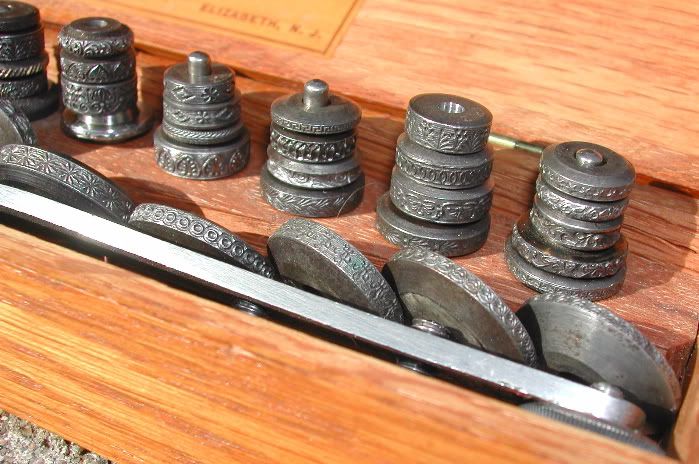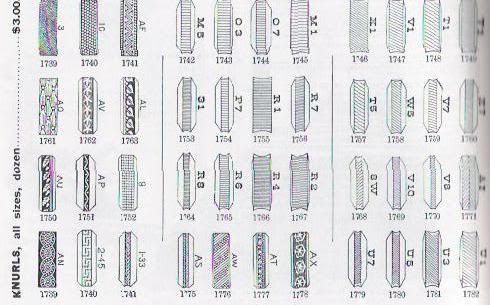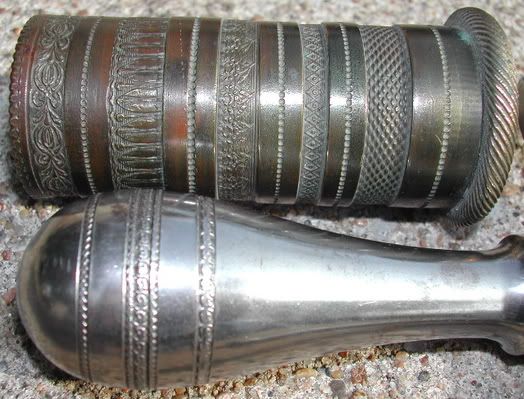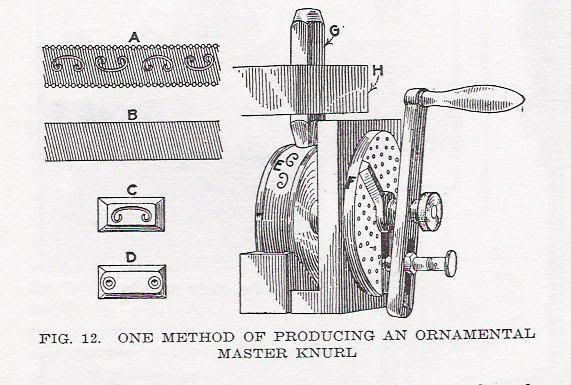rivett608
Diamond
- Joined
- Oct 25, 2002
- Location
- Kansas City, Mo.
I was looking at my photo-bucket file and realized I have posted a bunch of knurling photos in different threads and thought it might be helpful to put them all in one.......
Here are some knurls etc...... the first picture is a 1890's Hammacher, Schlemmer & Co. catalog showing some knurls, some catalogs have up to three pages of different patterns...... also is a sample bar of knurls from a circa 1880's tool chest... it was packed up with the gentleman's knurls and holders, all of which I have. At the top is a set with handle similar to that shown.
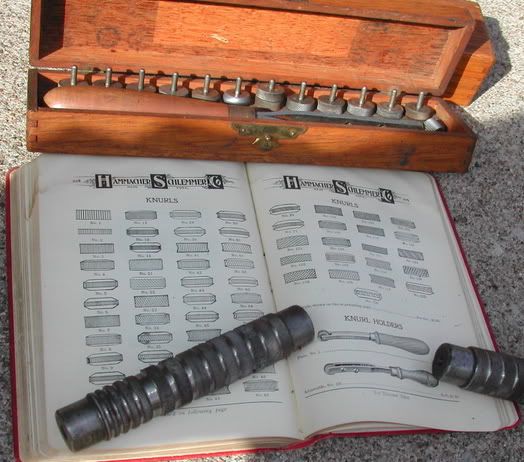
Here are a few better shots of these... this is the end of that sample bar....
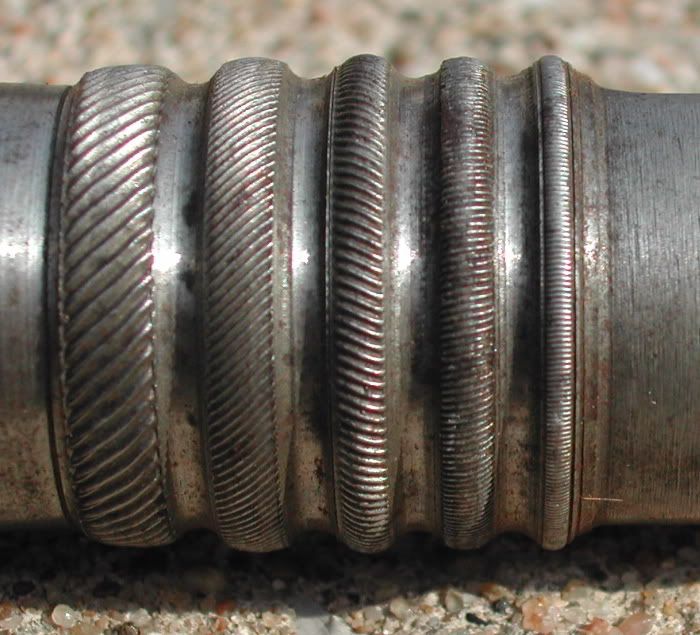
This is what IMHO is one of the nicest sets to use ever made.... it is by Severance Tool Co...... it has diamond, flat both straight and angled, con-cave both straight and angled.... all in different pitches.... and you can also adjust the rotation or angle in the tool holder..... and if you don't like the results you replace the knurl with a cutter, take off a bit and start over without disturbing your set-up.... and even has it's own little tommy bar. If you ever see one of these....BUY IT! I think they were made from the 20's to the 50's, maybe? anyone know?

And these are some knobs from a pair of shop made 21" dividers..... I have taken the one off the wing and set it next to the other..... they are about 7/8" dia...... you can see the guy had some fun with different patterns...

And some more from a shop made center divider...
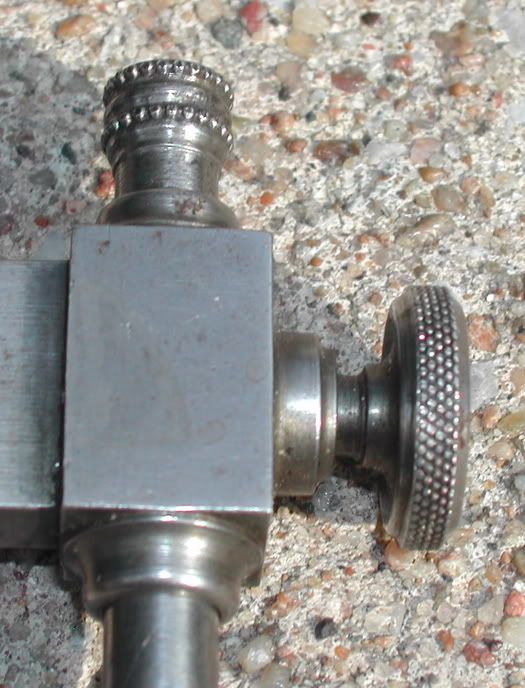
Here are some knurls etc...... the first picture is a 1890's Hammacher, Schlemmer & Co. catalog showing some knurls, some catalogs have up to three pages of different patterns...... also is a sample bar of knurls from a circa 1880's tool chest... it was packed up with the gentleman's knurls and holders, all of which I have. At the top is a set with handle similar to that shown.

Here are a few better shots of these... this is the end of that sample bar....

This is what IMHO is one of the nicest sets to use ever made.... it is by Severance Tool Co...... it has diamond, flat both straight and angled, con-cave both straight and angled.... all in different pitches.... and you can also adjust the rotation or angle in the tool holder..... and if you don't like the results you replace the knurl with a cutter, take off a bit and start over without disturbing your set-up.... and even has it's own little tommy bar. If you ever see one of these....BUY IT! I think they were made from the 20's to the 50's, maybe? anyone know?

And these are some knobs from a pair of shop made 21" dividers..... I have taken the one off the wing and set it next to the other..... they are about 7/8" dia...... you can see the guy had some fun with different patterns...

And some more from a shop made center divider...




